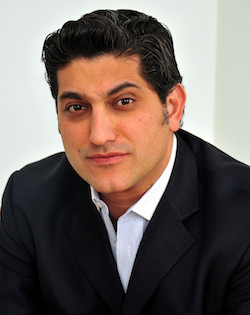Automated trading technology has been around since the inception of electronic trading decades ago, and over that time there have been massive improvements in speed, reliability, and user interface.
In the view of some traders and providers of trading technology, the next frontier is baking business intelligence — the applications, infrastructure and tools that can transform raw data into actionable information — into the technology.
“Technology should be smart and predictive, and technology should deliver decision support,” said Alfred Eskandar, chief executive of Portware. “The way you do that is by taking the intelligence and embedding it into the fabric of the technology itself.”

Alfred Eskandar, Portware
That embedding can be viewed as the ultimate in trading-technology customization, as the technology is not only customized to perhaps a stated style or size of a manager, but to a granular and historical database that is 100% unique to the investment organization.
The utilization of what is called dynamic data or predictive analytics is most compelling for large equity managers, whose transaction histories comprise reams of buys and sells effected by multiple traders and dozens of portfolio managers, spanning a wide variety of market conditions. Trading and investing firms have always sought to use past results to improve future performance, but there was a separation in processes.
“With trade automation, you’ve had really smart guys looking at a business and saying if we systematically make these adjustments, we can squeeze out this performance. But it was never embedded into the technology,” Eskandar continued. “Now you can take automation technology and apply BI principles to it, to achieve efficiencies, cost benefits, and additional performance.”
Embedding predictive analytics into trading technology has specific applications such as alpha profiling (also known as portfolio-manager profiling), algorithm selection and management, data visualization, and ‘smart’, or self-learning execution management systems (EMSs).
According to Eskandar, Portware is the only firm offering a product that marries business intelligence with trading technology. Clients who are using the process are trading more efficiently to the tune of 17 to 22 basis points on average, he said. For a $10 billion manager, that represents $17 million to $22 million per year.
To be sure, the process of applying business intelligence to trade execution is still conceptual for most market participants. The current state of play can be likened to investment managers checking out a concept car at an auto show — it looks good and the presenter’s pitch is impressive, but a lot more information-gathering and research is needed before it’s in the driveway.
“I have been highly encouraged by some recent demonstrations of some advanced cognitive trading platforms that have moved out of the development stage,” said Steve Hedger, managing director of trading and investment operations at Fifth Third Asset Management in Cincinnati. “Although encouraged, I still feel trading is an art and advances in trading technology will continue to assist a trader, not just replicate their actions.”
Eskandar said the cutting-edge methodology is not meant to replace traders, rather the idea is to arm them with more decision-support tools to keep up with machines and a fragmented marketplace.
Interest Piqued
Hedger heard a presentation about cognitive engineering and advanced predictive technology at an institutional trading conference about a year and a half ago, and he said his interest was piqued enough to initiate a follow-up discussion with the presenter.
“I have looked at how we could mine our historical trading data and thought there should be a way to use a quantitative approach to select predetermined trading routines,” Hedger told Markets Media. “With our current analytic tools, analyzing our trading patterns is just too subjective.”
“We would always welcome any technical trading advances that helps add alpha to our portfolio returns,” he continued. “I feel that the traditional (order management system) and EMS trading platforms have advanced with new features and better functionality in recent years, but have not really addressed how they can systematically help a buy-side trader add alpha.”
Lead image credit: Flickr/ Mats Lindh
